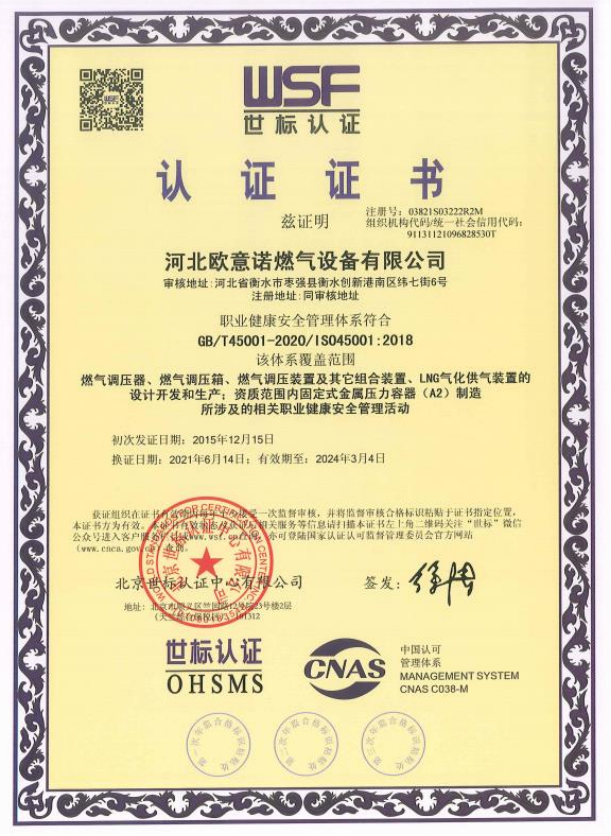
Oct . 02, 2024 04:36
Back to list
Understanding High Pressure Regulators and Their Importance in Various Applications
High pressure regulators are essential devices used in various industries to manage and maintain the pressure of gases or fluids. These regulators play a pivotal role in ensuring the safety and efficiency of systems that operate under high pressure conditions. In this article, we will explore the significance, types, functions, and applications of high pressure regulators.
At their core, high pressure regulators are designed to reduce the pressure of a gas or fluid from a high inlet pressure to a much lower outlet pressure. This process is crucial in applications where consistent and precise pressure levels are necessary. For instance, in the industrial field, these regulators are commonly employed in gas distribution systems, welding processes, and chemical manufacturing, where high-pressure gases like oxygen, acetylene, and nitrogen are utilized.
One of the key functions of high pressure regulators is to ensure safety. High-pressure environments can be hazardous, as they may lead to uncontrolled releases of gas or fluid if not properly managed. Regulators help prevent such incidents by maintaining a stable outlet pressure and allowing for controlled flow rates. This regulation not only enhances safety but also contributes to the efficiency of the system, as it reduces wastage and optimizes the use of resources.
High pressure regulators come in various types, each designed for specific applications. For example, there are single-stage and dual-stage regulators. Single-stage regulators are typically used in applications requiring quick and simple pressure reduction. They are straightforward in design and offer a direct method of controlling pressure. On the other hand, dual-stage regulators provide a more stable output pressure by using two stages of pressure reduction, making them ideal for more sensitive applications where fluctuations must be minimized.
high pressure regulators

Materials used in the construction of high pressure regulators are also critical to their performance. These devices are often made from robust materials like stainless steel or brass, which enhances their durability and resistance to corrosion. Moreover, the design of the regulator, including features like diaphragm flexibility and spring tension, greatly influences their efficiency and responsiveness to pressure changes.
Applications of high pressure regulators extend beyond industrial use. They are also crucial in medical settings, where gases such as oxygen need to be delivered at safe and controlled pressures. In the culinary industry, pressure regulators are used in gas grills and stoves to ensure that the fuel source is safely managed. Additionally, in the automotive sector, these regulators are vital in controlling the delivery of fuels and other gases in engines.
In conclusion, high pressure regulators are indispensable tools in a wide range of applications. They ensure the safe and efficient management of high pressure gases and fluids, thereby enhancing operational safety and system integrity. Understanding their function, types, and applications is essential for anyone working in fields that involve high-pressure systems. As technology continues to advance, the design and efficiency of these regulators are likely to improve, further enhancing their importance in various industries.
Latest news
-
Safety Valve Spring-Loaded Design Overpressure ProtectionNewsJul.25,2025
-
Precision Voltage Regulator AC5 Accuracy Grade PerformanceNewsJul.25,2025
-
Natural Gas Pressure Regulating Skid Industrial Pipeline ApplicationsNewsJul.25,2025
-
Natural Gas Filter Stainless Steel Mesh Element DesignNewsJul.25,2025
-
Gas Pressure Regulator Valve Direct-Acting Spring-Loaded DesignNewsJul.25,2025
-
Decompression Equipment Multi-Stage Heat Exchange System DesignNewsJul.25,2025

